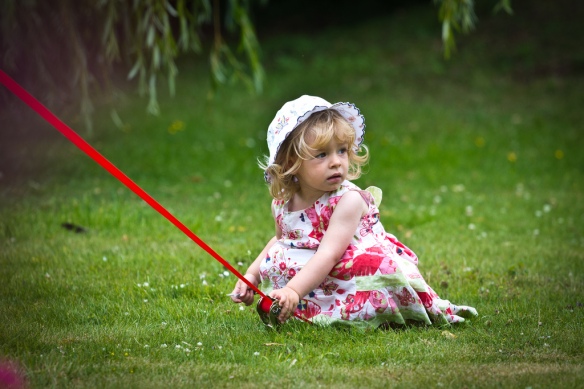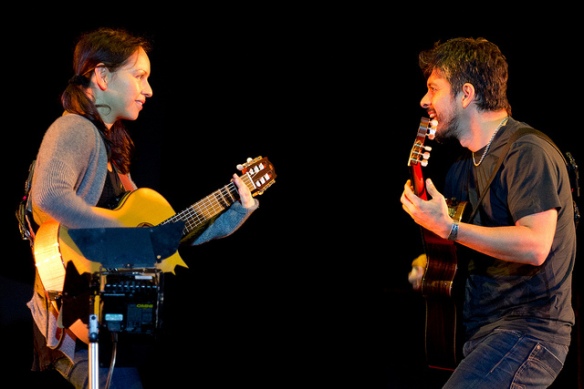After looking at, researching, testing and analysing dozens of telephoto prime and zoom lenses I opted to go for the modestly priced Canon 70-200 f/4 L USM lens. I found a second hand copy being sold on eBay by a hobby photographer who lived locally so I snapped up the opportunity (excuse the pun) to bag a £500 lens for under £380 in mint condition (plus it has the handy tripod mount ring included.)
I’ve used every incarnation of the 70-200 L that Canon produces including the two f/2.8 versions (IS and non-IS) and the IS version of the f/4 and must admit it was only the 70-200 f/2.8 L II that was noticeably better in my experience, and even then only in terms of it’s capabilities with the faster aperture and image stabilisation. The image quality of all of Canon’s 70-200 lenses is superb and seldom differ in terms of sharpness and colour rendition. It’s still the cheapest lens in my kit bag but remains a personal favourite. This shot from one of the first weddings I ever shot is a great example of all of it’s advantages, including it’s fast autofocus:
The one down-side of this lens is that it will put the rest of your kit to shame. The latest lens I invested in was the 24-70 f/2.8 L and whilst I’ve been very impressed with it, I still don’t think it matches my (considerably cheaper and older) 70-200 f/4. Even wide open at f/4.0 this lens is pin-sharp to the finest detail and every snap I get with it just pops with colour and vibrance. It’s so pleasing to have a lens that you know is capable of capturing the very best detail and for the price you’ll struggle to find another lens that performs this well.
It must also be said that you shouldn’t let the f/4 aperture and lack of IS put you off. It’s the main reasons I hear people going for the twice or quadruple-priced 70-200 alternatives. If used correctly you can get great low-light results out of this lens despite the slower aperture. I’ve been using it with my 60D and have often had ‘wow’ moments where I’m surprised myself how well the photos have come out.
I used the 60D and 70-200 whilst covering The Big Chill Festival for Lucozade last year. I thought I would have to switch to my 50mm 1.4 when the light faded around 8pm each evening but thankfully that wasn’t the case. I was able to keep on shooting late into the night, photographing Kanye West and Rodrigo Y Gabriela with pleasing results:
Video Use
I bought this lens with the intention and assumption that it would serve as a stills lens but the moment I started using it for video I realised it was an all-rounder, brilliant at both photos and video. The focal length compression gives a lovely effect when shooting close-ups in short films and music videos at 135mm-200mm, blurring out the background beautifully with producing excellent bokeh. Even at f/8-f/11 this lens produces fantastically shallow depth of field whilst making your subjects pin sharp with great skin tones.
On a decent fluid video head it’s easily possible to pan and tilt smoothly at the full 200mm end of the focal length. The IS in the other models of the Canon 70-200 admittedly make doing that much easier, and tracking (either on a slider or on tracks) smoother, but it’s still possible to get great camera movements using it. I use this lens from time to time on a Konova Slider and whilst I get the odd shake or jitter, smoothcam removes that easily in post.
Again, low-light performance is stunning on this lens in video mode. I shot this video entirely on the 70-200 at f/4 – f/5.6 and given the large focus ring and decent throw, it was relatively easy to follow focus too:
Update May 2014: I’ve returned to this post after shooting a wedding at the weekend (video) and hearing the usual “what is that lens? is that the cheap version without IS?!” I have heard this many many times when shooting with this lens. Whilst I own a lot of the top end L lenses from Canon (the 24-70mm and the 100mm L macro) I still stick with the 70-200, having never really found a reason to upgrade to the heftier, pricier f/2.8 IS versions. What people don’t take into account sometimes is the weight of this lens (it weighs a tiny 700g, half of the weight of the bigger IS versions. Meaning, when I carry this lens around on my 5D, with a carbon fibre Sachtler Ace tripod, I barely feel it. I can shoot all day with this lens and not get tired, achey arms… and I’ll have reliably pin-sharp images, full of Canon L quality colour vibrancy and the gorgeous depth of field and bokeh. I still recommend this lens to any photographer or videographer without question!




